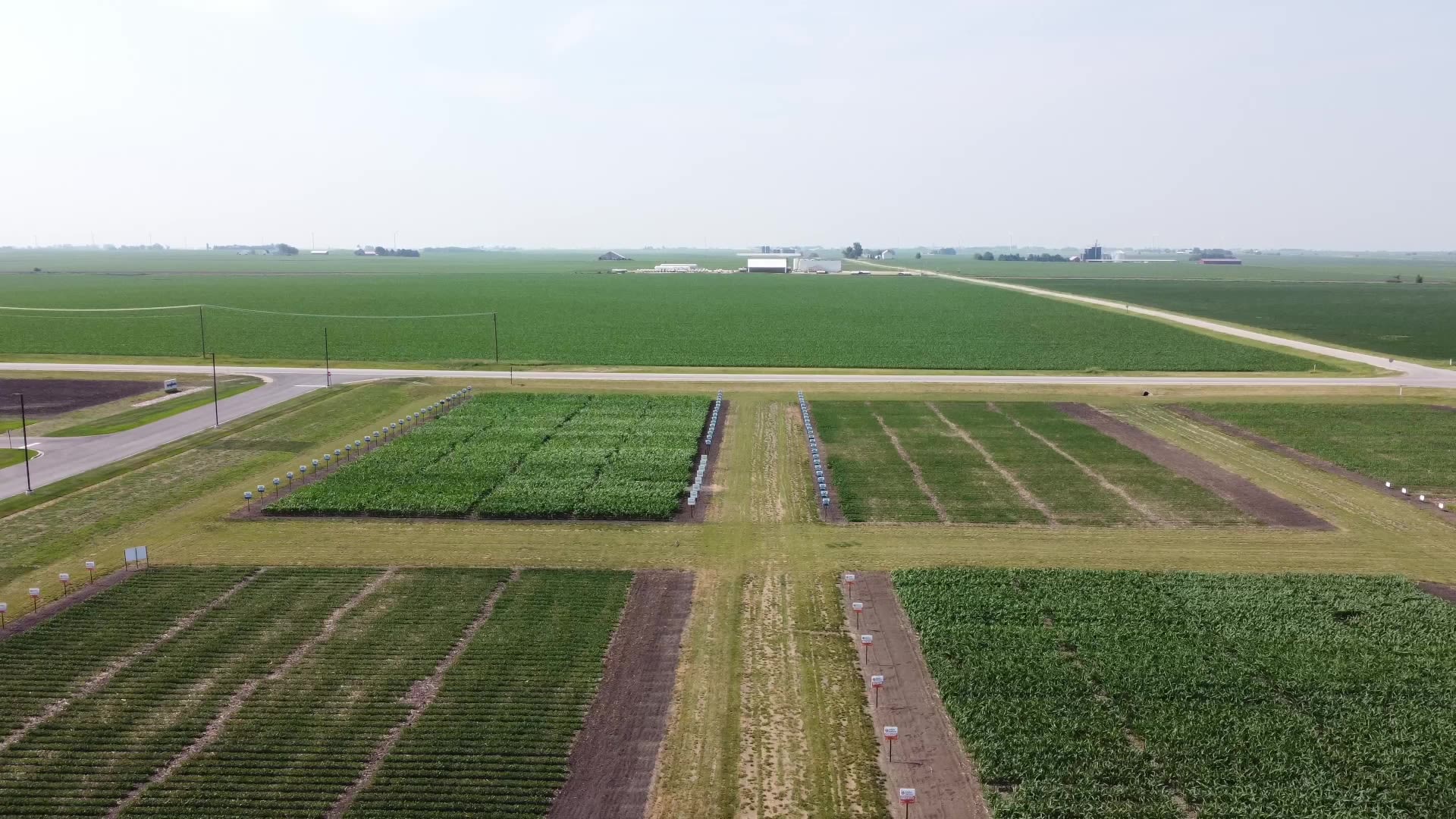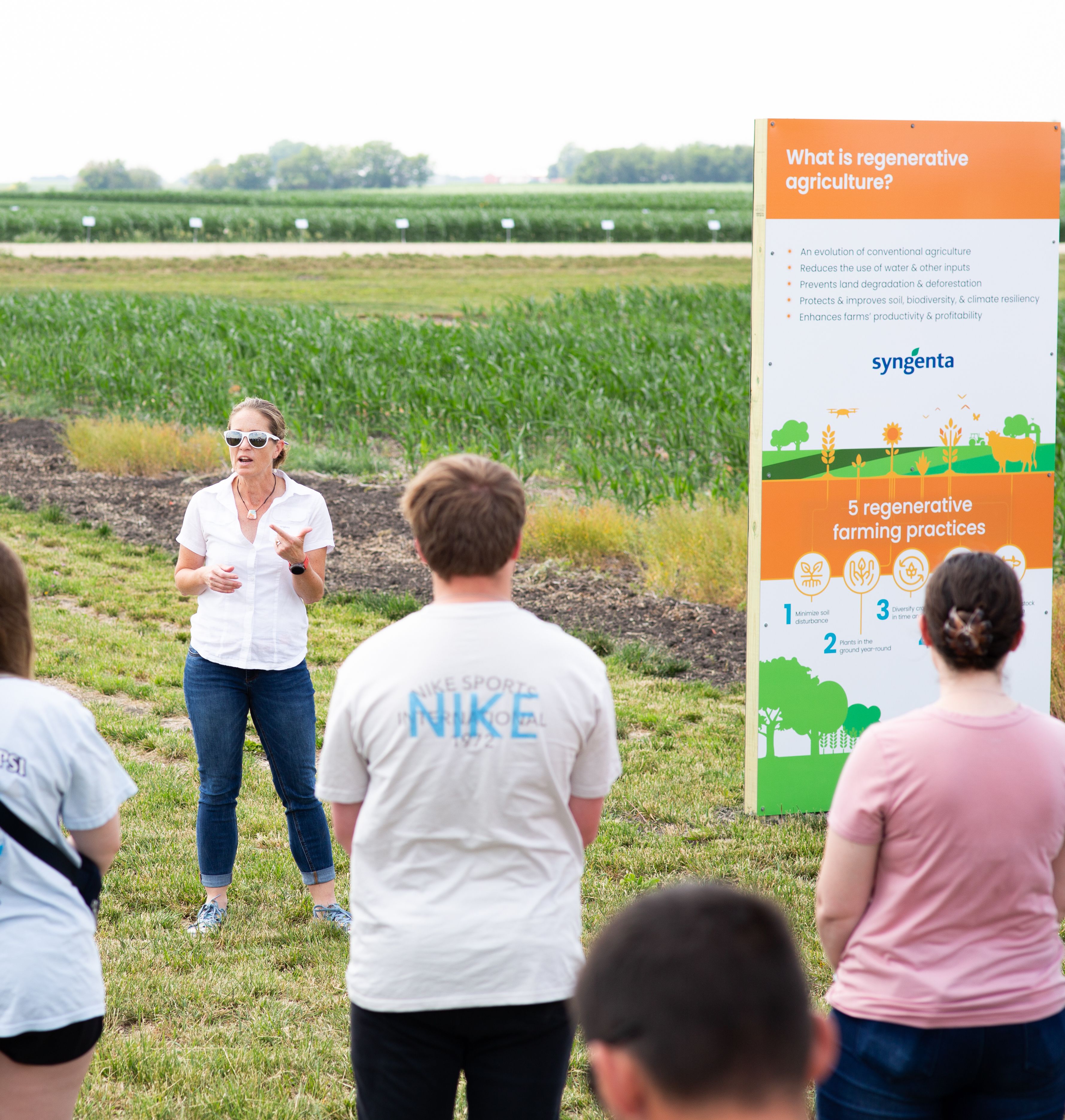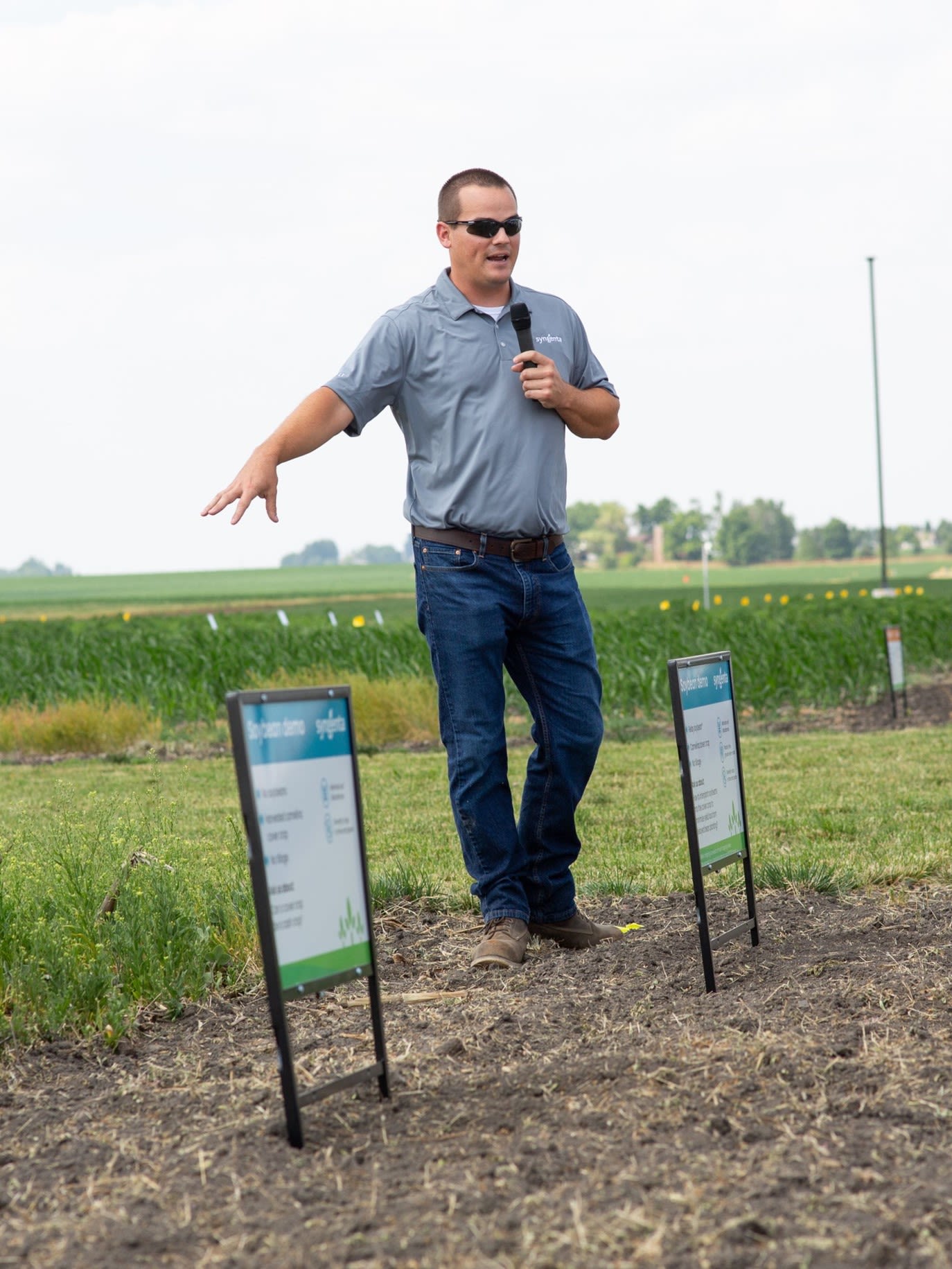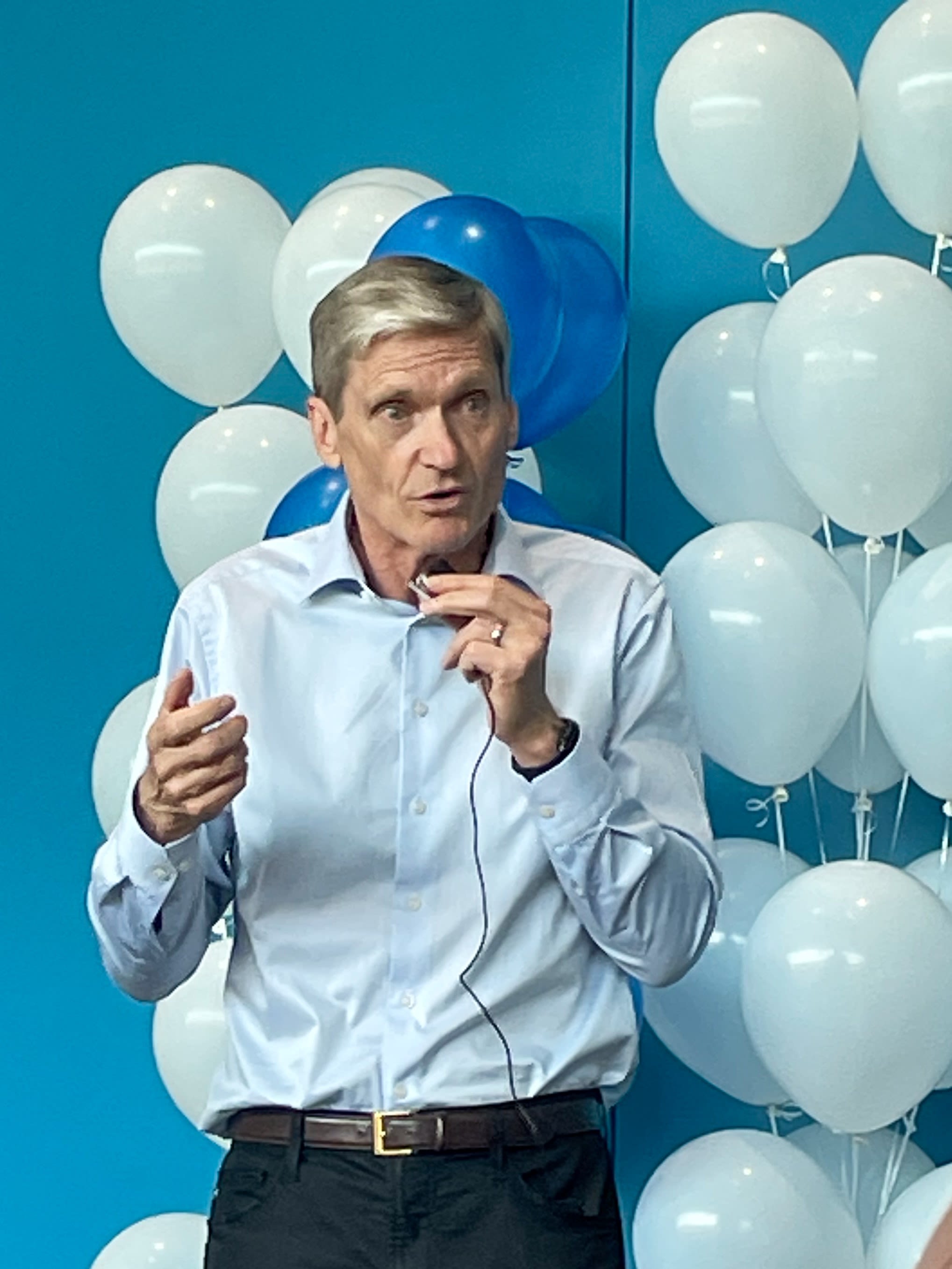“Learning by doing”
at new regenerative agriculture demo field

For farmers, climate change is not an abstract threat but a daily reality. Extreme weather—heat waves and droughts, alternating with downpours and flooding—can wipe out crops, destroying a season’s profits.
One potential long-term recourse to climate change’s impact on agriculture—and agriculture’s impact on climate change—is a farming approach known as “regenerative agriculture.” It’s based on principles that seek to boost farms’ productivity, profitability and environmental sustainability while improving soil health over time and preserving resources including water.
At the new Syngenta Seeds R&D Innovation Center in Malta, Illinois, a 12-plot regenerative agriculture demonstration field brings four key principles of this approach to life: minimal soil disturbance (through no-till or low-till farming); plants in the ground year-round (through the use of cover crops); crop diversification (through crop rotation); and precision agriculture (using GPS seed and soil mapping to ensure that biological and chemical inputs are only applied where they’re needed).
“By using regenerative agriculture practices, we learn by doing and can share what we’re learning with farmers,” said Liz Hunt, Syngenta’s head of sustainable and responsible business for North America.
Age-old soil health principles, scaled for a modern context
Syngenta Group placed the new Innovation Center in the heart of the U.S. corn belt with the express purpose of facilitating collaboration between its research and development teams and the farmers whose needs are the focal point of their work.
At the regenerative agriculture demo field, agronomists experiment with a variety of techniques and strategies for making regenerative agriculture easier to adopt and scale. By analyzing data on each micro-patch of soil, they’re gaining insight into what works, what doesn’t and what adjustments could lead to improved outcomes.
Many farmers already practice aspects of regenerative agriculture, which is rooted in principles established by indigenous farming cultures. Syngenta Group has taken a leadership role in applying modern tools and technologies to these age-old soil health principles, by tracking and analyzing data to maximize regenerative agriculture’s benefits and enable it to be practiced at scale. Regenerative agriculture has been gaining momentum throughout the food and agriculture industries, with attention from companies including Walmart, Nestlé, Pepsi, Novartis, Nutrien and Tyson Foods.
“A lot of the talk now is about regenerative agriculture, so we're trying to work with farmers to show how these practices can be adopted in a way that enhances their profitability,” Erik Fyrwald, CEO of Syngenta Group, said at the Innovation Center’s grand opening in late June. “What we’re hearing is that farmers want to understand what their downstream customers desire in terms of sustainability. And then, they want to adopt practices and products that ensure they maintain very competitive yields that are also more resilient to climate change and weather extremes. We have a terrible drought now, but in the spring it was cold and rainy. And who knows what happens before harvest or even next year?
“This is all about being farmer-centric,” Fyrwald continued. “We want to collaborate with farmers so they have input into what we're doing, what we're testing, what we're trialing, and to get their feedback on what other practices they’d like to see us try.”
Cover crops that are also cash crops
During the opening day celebration at the Syngenta Seeds R&D Innovation Center, farmers listened closely as Brad Bernhard, an agronomic research scientist at Syngenta, pointed to a demo plot filled with camelina—a cover crop that can prevent soil erosion and reduce nutrient loss between growing seasons, but is also marketable. Camelina seed oil can be used in food, plastics and biofuel.
“One of the comments farmers often make about cover crops is you're planting it and then you're killing it off, and they don't see any cash value from that,” Bernhard said. “Camelina can be a cash crop. It has dense oil content and a short growing window that may allow you to squeeze another crop into your operation, while gaining all the benefits of a cover crop.”
Next, Bernhard pointed to a nearby plot where rows of soybeans had been planted alongside previously planted rows of camelina: a practice known as “relay cropping.” This system, Bernhard noted, allows farmers to reap the benefits of cover crops and crop diversification without delaying their regular planting timelines (for soybeans, in this case).
“Relay cropping is when you interplant a second crop into an already existing crop,” Bernhard explained. “There’s really three main benefits of this program. Number one, you have a crop in the ground all year round. Number two, you’re not delaying your soybean planting. And number three, you’re getting two crops off of one growing season.”
Sparking farmers’ curiosity
Ben Dolan, who primarily grows corn, soy and wheat at the expansive DAK Farms, in Durand, Illinois, was on hand for the grand opening and said the camelina demo plots “caught my attention.”
“We’re trying to implement cover crops in our program already,” he said. “But if I can get paid back with a harvestable crop on that, instead of fall fallow—I did find that pretty interesting.”
Dolan said that about 50% of his farm is no-till, while 48% is low-till. By moving away from intensive tillage, which disrupts soil structure and biodiversity, his farm has also substantially reduced fuel and equipment costs.
Like all farms, DAK Farms is focused on profitability. When corn prices are high, for example, it’s hard to make an argument for rotating corn with soy. But long term, “the viability of the land is how we make our money,” Dolan said. And so, when it comes to regenerative agriculture, DAK Farms’ journey is not over.
“We do quite a few things,” Dolan noted. “But you always can get better, right?”

Liz Hunt, Syngenta’s head of sustainable and responsible business for North America, gives visitors a tour of the Syngenta Seeds R&D Innovation Center’s 12-plot regenerative agriculture demonstration field.
Liz Hunt, Syngenta’s head of sustainable and responsible business for North America, gives visitors a tour of the Syngenta Seeds R&D Innovation Center’s 12-plot regenerative agriculture demonstration field.

Agronomic research scientist Brad Bernhard briefs visitors on the benefits of “relay cropping,” which allows farmers to reap the benefits of cover crops and crop diversification without delaying their regular planting timelines.
Agronomic research scientist Brad Bernhard briefs visitors on the benefits of “relay cropping,” which allows farmers to reap the benefits of cover crops and crop diversification without delaying their regular planting timelines.

“A lot of the talk now is about regenerative agriculture, so we're trying to work with farmers to show how these practices can be adopted in a way that enhances their profitability,” Erik Fyrwald, CEO of Syngenta Group, told guests who gathered for the Innovation Center’s grand opening.
“A lot of the talk now is about regenerative agriculture, so we're trying to work with farmers to show how these practices can be adopted in a way that enhances their profitability,” Erik Fyrwald, CEO of Syngenta Group, told guests who gathered for the Innovation Center’s grand opening.

